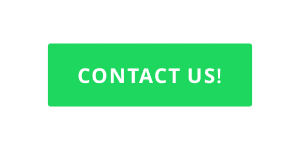Contents
Getting Value from Software Provider Before You Commit
At UruIT we take every project we are involved in very seriously. Before a project starts, we go through a scoping process, during which our goal is to connect as a software provider, find out what the potential client needs are and understand if we are the right partners to help them.
Scoping is challenging because it is the very beginning of a relationship. This means no one knows anything about the other. You may say that scoping can be a burden because no one knows for sure if we will end up working together. However, for us, the scoping process has a purpose greater than selling our services and it brings value even if we don’t end up working together.
At the very end of 2016 we decided to experiment with a new way of making scoping as natural and smooth as possible. We decided to invite more members from various disciplines to take part in the process so that the best ideas would come forth when discussing new projects.
That’s when we decided to create multidisciplinary scoping teams with a common goal, and this strategy has been working since then.
The scoping team
The team is shaped commonly by a Tech Leader, a UX Designer, a Product Owner, and a Business Developer. For each new business opportunity we create a specific team. The people who make part of this team have something to add to the conversation. They may be experts in the potential client’s industry, field or technology. Every time a new opportunity arises, the commercial team starts to build a scoping team, which is provisional. The opportunity is posted in our Slack where everyone can offer to be part of this team. That actually doesn’t mean that they will be on the project if the deal is done. It just means that they want to bring his/her experience to the table and help.
Besides the commercial team, the UruITers don’t necessarily have a background in sales. In fact, most of us haven’t even sold lemonade in our lives! But everyone in the scoping team shares his/her expertise with the group. Actually, this is more valuable than knowing how to negotiate.
Understanding the potential software provider
The goal during scoping (otherwise known as presales) is to get an understanding. Basically, to know the prospective client and the project they have in mind. We also let them get a sneak peek of our work methodology and what it would feel like to work with us. In this process, we aim to exchange ideas and already start to bring value to the other company by asking good questions and fostering reflection. We aim to learn about the project:
- What is the time to market (TTM)?
- What’s the focus?
- Why do users need this app?
- Is it a mobile, desktop or tablet app? And why?
- Is it a new product or a digital transformation?
- Does this product represent a technical challenge?
- Is the product making people happier?
- Does this product save lives? Or maybe make life easier?
- Is the prospective client a CTO, a CMO or an entrepreneur?
We evaluate many aspects of a potential project, not just TTM or the technology stack. Cultural fit is just as important as those two. So, we spend an hour or so asking and responding to questions. Each person within the scoping team asks and answers based on their expertise, whether it be in UX, the underlying technology, etc.
These questions help us get to know what we would be dealing with if we were to work on the project. They also help us understand who the team on the other side is, how they are used to working, and what roles they have. This way, we can understand what roles the potential client needs. Moreover, we identify how we could set up a mature team to complement them.
Win-win questions
Moreover, these questions help the potential client too. By answering them and walking us through their ideas and plans, they get to see the project from a different perspective, think about aspects they may have neglected, listen to different opinions and sometimes open their eyes to what they may have not considered before.
What’s interesting about our scoping process is that it doesn’t work as most business development processes work. Instead of us showing our potential client how much we know and talking endlessly about how great our company is, we limit ourselves to listening. We don’t do most of the talking, the other party does. And it is precisely by encouraging them to talk to us and asking them questions, that we provide value the most.
By the end of that video call we have enough of an understanding of the project and the input we need to decide if it makes sense to us to work in collaboration. Besides this, we also gain insights from an initial survey with our top outsourcing questions we send to every new contact before scheduling a call.
Once we decide, we move on with the business proposal if we see there’s a great opportunity for both sides. If it’s a fit for us, we submit a proposal and proceed from there. Sometimes, if we don’t feel it’s the right project to us, we have no qualms with referring the prospect to one of our partners.
Estimating the project
UruIT has a time and materials model, but we estimate a ballpark figure to give an idea. So it’s easier for our prospective clients to get a sense of how much they need to invest, at a very high level, in the project.
Since last year, we’ve been improving in this task. We’ve developed some handy tools that allow us to estimate the work scope based on prior and current projects’ metrics. Our focus is to work within a flexible scope based on a frequent release model where the client sees valuable software constantly.
Estimation is hard. But it is even harder to work on a project estimated by someone without experience in your field. So each scoping team member makes a high-level estimation, concluding with a ballpark amount and a proposal document. This material explains our recommendations to achieve the project’s goals: development process, design process, team size, and everything in-between.
For good measure, the team continues participating in the follow-up process to clear any concerns or issues that show up along the way.
The takeaway
Nowadays, 32% of our scoping processes culminate in a new business partnership. It’s true that creating a scoping team means we must invest more time and resources, but we believe that it’s more beneficial for both us and the potential client. Considering the big picture, we increase our chances of generating better projects and creating healthy, long-term business relationships.
With that said, we welcome you to reach out to us! Let’s schedule a meeting if you’re interested in trying out our scoping process yourself, to gather new ideas and see if we are the outsourcing development company to help you accomplish your next project!


